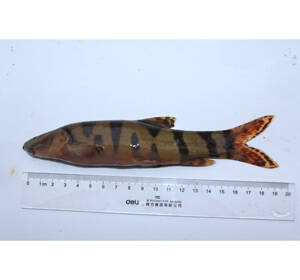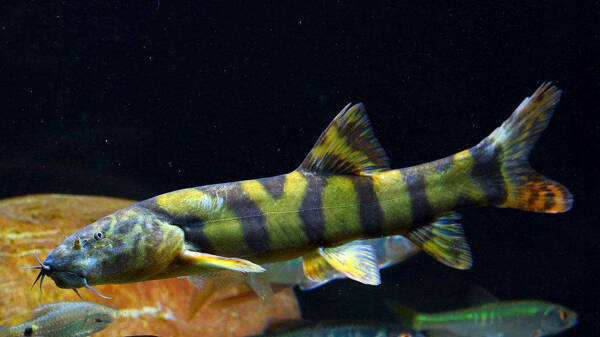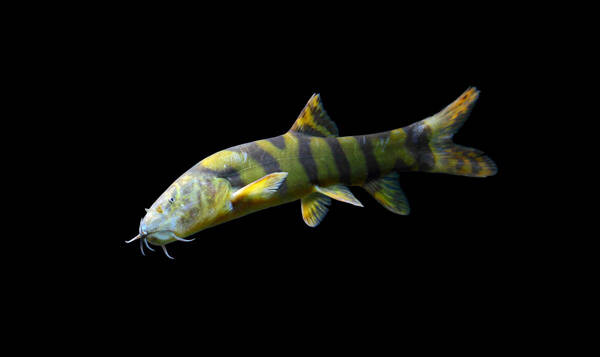
Alias Leptobotia elongata,Flower fish, spotted loach, flower loach, red sand loach, fire army, flower loach
Family Cypriniformes Cobitidae Microhylidae
length About 20 cm, up to 50 cm
Life No verification information
Leptobotia elongata (scientific name: Leptobotia elongata) is a fish of the genus Leptobotia in the family Cobitidae of the order Cypriniformes. It is a giant among loaches and one of the largest loaches in the world.

The long thin loach is a warm-water bottom fish that likes to live in the middle and upper reaches of rivers and in the cracks between gravels where the water flow is slow. It often clusters among the gravels or rock cracks at the bottom of the water. It has the habit of swimming upstream when the river is flooded.
The long thin loach is a bottom-dwelling ferocious carnivorous fish that mainly feeds on small fish, aquatic insects, shrimps, large zooplankton, etc. It is the fastest growing and largest fish in the family Cobitidae. The average individual weight is 1.0-1.5 kg, and the largest individual can reach about 3 kg. Under artificial breeding conditions, it also feeds on compound feed. It grows fast, with an average weight of 60.3 grams at one year old, and can reach commercial specifications at 1-2 years old, with high nutritional value.

The gonadal structure of the long thin loach is different in males and females. The male testes are paired and milky white; the female ovaries are light flesh-colored in the early stages of development and blue-gray or light yellow in the later stages. Its reproductive period is from March to May, and the eggs are sticky and attached to the stone for hatching.
The long thin loach once accounted for a certain proportion of the catch in the main and tributary rivers of the middle and upper reaches of the Yangtze River, and is one of the important economic fish in the production area. However, in recent years, due to the overall decline in the amount of fish resources in rivers, the small fish that serve as its food have decreased significantly, which has a certain impact on the growth of the long thin loach; secondly, soil erosion in the middle and upper reaches of rivers and changes in hydrological conditions have destroyed its feeding and spawning sites; coupled with comprehensive factors such as overfishing, the natural resources of the long thin loach have been sharply reduced, and the population has dropped significantly. At present, the long thin loach is listed as vulnerable (VU) in both the "Red List of Chinese Species" and the "Red Book of Endangered Animals in China - Fishes".
It is listed in the second level of the "List of National Key Protected Wildlife in China". (Wild populations only)
Protect wild animals and stop eating game.
Maintaining ecological balance is everyone's responsibility!